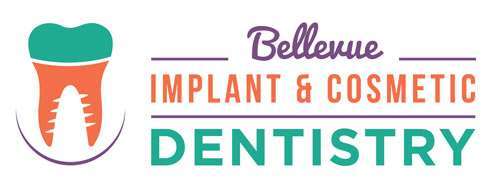Dental restorations can fail. Seeing your dentist right away can help correct the situation if it happens. Your restorations may need replacements already. Routine dental visits allow your dentist to check your restorations and schedule the next appointment for the re-treatment. If you want to know what happens when dental restorations fail, here are the details.
The reasons for failure
Dental restorations often fail because of wear and old age. These restorations may already be close to the end of their life span. They can fail in many ways. Silver, porcelain, and composite resin dental fillings can chip. Silver fillings tend to crack. Bonded restorations can lose adhesion.
In some cases, a gap appears between the tooth and the filling. This space can allow bacteria and food particles to enter the supposedly treated tooth. Decay can develop inside the tooth. This will then cause severe dental issues.
The most common solution to failing restorations is to replace them. A dentist can declare a failing restoration if there is no sign of infection in the tooth or surrounding gums. There is also restoration failure if the restoration can still support dental function and has an acceptable physical appearance. An underlying infection must receive immediate treatment before it develops into a severe dental problem.
The diagnosis
Sometimes, it may be unclear if the problem is from tooth infections or failed dental restorations. The dentist will have to remove the restoration and check the tooth for the presence of disease. Restoring the tooth must happen as early as possible. Waiting too long may lead to an unfixable tooth.
The dentist will use tactile and visual examinations first to see how the tooth with a failing restoration responds to touch and pressure. Then, laser imaging and dental X-rays will come next. The technology will confirm the severity and location of the infection. Even if the restorations are not failing, these examination methods allow the dentist to check them. Being proactive in maintaining these restorations can prevent their early failure.
It is always important for the dentist to determine if the restorations are causing the dental infection. Tooth fractures, decay, food particles, gum inflammation, and chips around the dental restorations call for immediate restoration replacement. These factors make it more harmful for the person’s dental health the longer they stay. The dentist will recommend removing the old restoration, treating the tooth, and restoring the tooth again.
How dental restorations fail
Eating subjects restored teeth to different levels of biting and chewing pressures. These intense forces can damage restorations. Failures in restorations vary. Loose restorations are common. Sometimes, restorations loosen because the underlying tooth is damaged.
Bad bacteria can be aggressive. Consuming the food particles in the mouth makes them produce acids. The acids eat through the enamel and create cavities underneath the fillings. That is why restorations fall out.
Root canal treatments are supposed to remove the infection. The result is to make the tooth pain-free and alive. In some cases, a root canal-treated tooth starts to hurt again because of a tiny infection. This could destroy the treated tooth if it does not receive treatment.
Regular dental fillings cannot handle large and deep cavities anymore. Dentists use dental crowns to restore teeth with severe cavities. These dental restorations keep the tooth together. A crown attaches to the tooth by means of a strong adhesive. Over time, the adhesive weakens, causing the crown to come off or loosen.
Treating dental restorations
Failing restorations can result in gaps between the tooth and the restoration. This contributes to the development of bad breath and bitter taste in the mouth. It can also lead to the onset and worsening of decay and restoration leaks. For this case, the dentist can use a dental onlay or crown to replace the failing dental restorations.
Many people do not know if their restorations are already failing. Different dental replacements can fail in different ways. The types of failure affect the underlying teeth in different ways as well. The dentist can help decide which new restoration can take the place of the one that failed.
Dental restorations can fail, but your dentist can help replace them
Restorations can give you another chance at having a new tooth. Your dentist can recommend the right type of dental restoration for your tooth’s needs. Over time, your dental restorations can fail because of deteriorating adhesives, damage, or decay. Seeing your dentist right away can replace the failed restorations and give you your dental health back.
Are you considering getting dental restorations in the Bellevue area? Get more information at https://www.implantdentalbellevue.com.
Check out what others are saying about our dental services on Yelp: Dental Restorations in Bellevue, WA.
Related Posts
Which Dental Restoration Procedure Is Right For You?
At some time or another, most individuals will need dental restoration. Restoring teeth is necessary when the teeth are in poor condition due to decay or a lack of proper oral …
3 Common Dental Restoration Procedures
People who are diligent with oral hygiene may still experience tooth decay or damage that requires dental restorations. Even what may appear to be minor damage should be addressed and repaired …
How Does a Dentist Choose What Type of Dental Restoration is Right For You?
Dentists perform dozens of types of dental restorations, ranging from minimally invasive fillings to invasive but wholly restorative dental implants. When a dentist discusses the need for you to invest in …
What Are Dental Restorations and How Can They Help?
Getting a dental restoration is a way to repair teeth that are damaged, including chipped or cracked teeth, cavities, and worn-down enamel. There are different types of dental restorations available. The recommended …

